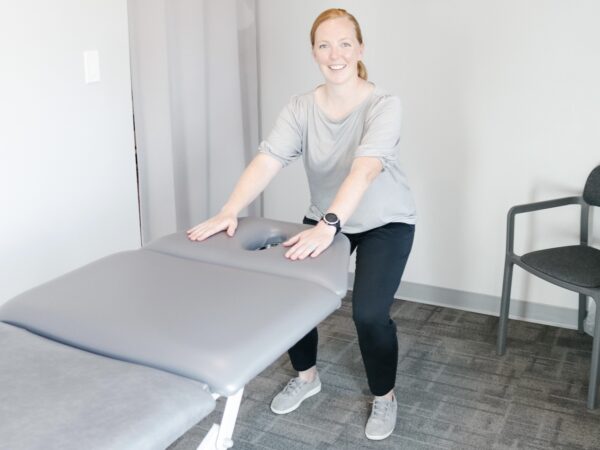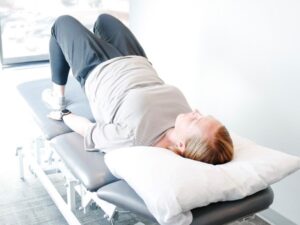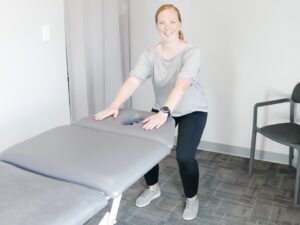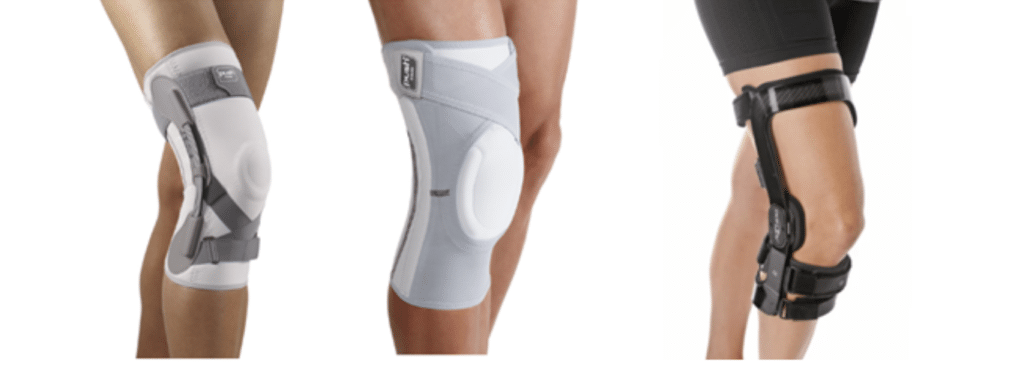Osteoarthritis Treatment Options: Things to Start Today
By: Julia Towers, Physiotherapist
Do you have achy, swollen, or creaky joints? Are you waking up in the morning feeling like the Tin Man? If so, these symptoms may be impacting your ability to participate in the activities you love, which can be very frustrating! So let’s talk about osteoarthritis and review some strategies for managing this common yet pesky condition.
What is Osteoarthritis?
Osteoarthritis occurs when the cartilage lining of a joint breaks down over time. Normally, healthy articular cartilage protects bones and provides a smooth surface for the joint to glide comfortably. But when there is wear on the cartilage, the joint can’t move as well as it should, which causes swelling and pain. Even further, small spurs (called osteophytes) sometimes form, which makes the joint more irritable.
Osteoarthritis is most common in the knees, hips, lower back, neck, fingers, and toes. Your doctor will often start by ordering an X-ray to confirm the arthritic changes. While important to have, these X-rays are not required to get started on treatment. Let’s talk about why that’s the case.
You Have Osteoarthritis. Now What?
There is more to do than just wait for surgery, which is good! Often the wait can be long for a joint replacement. There are many things that you can start right away that are beneficial regardless of whether you need surgery. So what do you do for this chronic condition?
Conservative Treatment For Osteoarthritis
Physiotherapy is a great place to start in the treatment of osteoarthritis. Your physiotherapist will educate you about your condition and come up with various joint protection strategies. Treatment will most likely include manual therapy to help reduce tension in your muscles and promote mobility in your joints. Additionally, an osteoarthritis treatment plan should always include exercises to help your range of motion, balance, cardiovascular training, and strengthening! These things may also help with weight management to assist in decreasing the pressure load on your joints.
Exercise is the bread and butter of osteoarthritis treatment. The more support and stability you can provide your joints, the less likely your symptoms will stop you from the daily activities that you enjoy.
Examples of great strengthening exercises for your knees
#1: The Bridge
#2: Body-weight Squat
Additional Treatment Options for Osteoarthritis
A brace can help you get back to your activities as well. At Stride, we offer a variety of options to help. These include our Push braces for the thumb, wrist, knee, and back, as well as custom unloader knee bracing through DonJoy. Gait aids like a cane or walker may be recommended in some instances, too.
There are also different injections available for some cases of osteoarthritis. Here are some of the most common:
- Corticosteroids (cortisone): This mimics the naturally occurring anti-inflammatory hormone in our bodies. Cortisone can be helpful for short term relief, lasting about three months. Cortisone also manages flare-ups in order for patients to use an exercise program, which will yield better long-term effects than the injection itself.
- Visco-supplementation (ex. hyaluronic acid): This aims to lubricate the joint and reduce pain, which results in better movement.
- Platelet-rich plasma (PRP): These injections draw blood from your body, and then a machine separates platelets from the rest of your blood. After this, the platelets are injected into the area of pain to inhibit inflammation, stimulate new cartilage formation, and increase natural lubrication. This treatment is appropriate for moderate osteoarthritis.
Although osteoarthritis is a disruptive condition that can take a toll, there is hope! No matter where you are on your journey with osteoarthritis, our physiotherapists are happy to work alongside you! To get started, click here to book an appointment online at our clinic.






